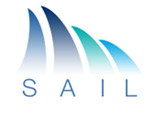On October 6th at the Future Internet Cluster of the 8th FP7 Concertation meeting, SAIL organized a workshop on cloud interoperability for which I had the privilege to be the moderator. Four panelists from different research areas accepted to participate to the event. After I set up the table for the workshop, the four participants presented their perspective on what are the challenges related to cloud interoperability and how they address those challenges in their research project. This was followed by a short debate on de facto standard vs standards pushed by regulators and standard bodies. There was also some discussions on the business aspect of cloud interoperability.
The panel consisted of Azimeh Sefidcon from Ericsson Research and CloNe WP-leader in the SAIL project, Patsy Phelan from TSSG, representing the PASSIVE project, Morris Riedel from the Juliech Supercomputing center and Strategic director of EMI and finally Yuri Demchenko, Senior Researcher at University of Amsterdam for the GEYSERS project.
My initial pitch was as follow. Cloud is becoming a dominant model for deploying applications and services. There are many public cloud providers in the market which offer to host applications and services in their infrastructure. At the same time, a large set of tools are available for building and managing your own private cloud. Each tool and cloud providers are proposing their specific interface. If an application provider has to deploy an application in multiple clouds for any reasons (location, regulation, redundancy, risk mitigation…), he is usually forced to use different interfaces, VM formats, storage APIs, etc which complexify the application deployment. From this, we can easily conclude that we need some form of interoperability between clouds.
In her position statement, Azimeh mentioned that the cloud interoperability challenges are not only at the user interface but also between cloud operator domains. There is a need to organized cloud providers in federations to offer services in different locations, taking into account different networks needs, topology and so on. One important challenge is to determine which information can be shared between cloud providers in a peer-to-peer communications as well as between the providers and the users to best fit the need of the application providers.
Patsy mentioned some work that has already done on cloud in the scope of the PASSIVE project and the EU commission. Some of the work was focusing on the security aspects of the cloud. He supported the fact that open standards are facilitators for deploying and using clouds. OVF, OCCI, libvirt were some of the elements mentioned. However, there is still a need to extend the current tools to include better support for security. For him, the key challenges are how to get traction from the industry, and how to ensure that we embrace governance, risk management and compliance.
Morris Riedel brought the grid experience into the discussions. He indicated that the grid community has gone through a similar process of evolving from a set of proprietary interfaces to a reduced in number but rich set of standards. He proposed a few ways on how the grid could inter-work with the cloud. The grid and cloud business models are different though. In the grid world, academic and governmental research institutes are sharing resources, rather than having an industrial player selling resources to customer on a pay-per-use-model. This raises some concerns about the grid users (mostly academic) using the industrial clouds as it would be perceived as a transfer of government funds to the industry. He raised also the issues related to storing confidential data in the cloud, few service level agreements (SLAs) comply with all regulations on privacy and data location.
The main message from GEYSERS as presented by Yuri Demchenko was that cloud interoperability needs to be based on a well defined architecture. For this purpose, GEYSERS uses the cloud architecture proposed by the National Institute for Standards and Technology (NIST) as a reference. They also defined a service delivery model, and new business model based on RORA: Resource, ownership, role, actors. Finally, they proposed an inter-cloud architecture where the interfaces between the different service models of the cloud (SaaS, PaaS, IaaS) would be standardized.
Large cloud players don’t really care about interoperability as they want to impose their own interfaces and lock-in their customers. Panelists believe there will still be room (and business case) for smaller cloud players (both providers and users) to agree on interoperable interfaces. These interoperable interfaces will evolve by iterating architecture and implementation work.
Unfortunately, we did not had much time for interactions with the audience. The only question we had the chance to address is “What are the main challenges related to networking in the cloud?”. The agreed answer was that management of SLAs needs to cover connectivity inside the data centers, between the data centers and potentially between the data centers and the application users. The mobility of VMs between data centres might also raise some technical issues related to IP forwarding and security.
This one hour workshop passed too quickly and a lot of questions remain opens. Maybe there is room for a longer workshop on interoperability…
Disclosure and disclaimer: I am engaged in SAIL, an ICT project around the Future Internet, on behalf of Ericsson. However the opinions expressed in this post are my personal, and not those of the SAIL project or my employer.







